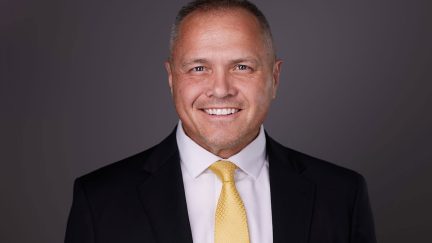Want the latest retirement plan adviser news and insights? Sign up for PLANADVISER newsletters.
As Student Loan Repayments Resume, Employers Can Help
Advisers and employers can prepare their participants for the financial shift and potential eligibility for matching funds in 2024.
Student loan repayments restart this month after more than three years of hiatus, and it has raised alarm bells for many savers in terms of how they will manage, according to a recent poll by Equitable Advisors, the wealth management division of Equitable Holdings Inc.
In late September, a survey of 500 Equitable Advisors’ financial professionals showed that among clients concerned about their student loan debt one year ago, nearly all (94%) are more concerned about their student loan payments today. In fact, among a list of financial concerns raised by clients to their advisers, student loan payments saw the biggest increase compared to 2022, according to the firm.
That heightened awareness, while a concern, is also a moment for advisers and employers to engage with employees on how to manage the cost, says Randal Lupi, financial adviser, Equitable Advisors.
“We have to tackle this hurdle,” Lupi says. “The people that were seasoned borrowers and payers had a stall, and now they’re starting again … but there are also those that graduated during the COVID forbearance that have never made a payment. That’s a big transition for them.”
Lupi says it is important for student loan borrowers to step back and consider their current situation, options and “make sure their ducks are in a row.” That includes, he says, making sure their student loan payments are “qualifying” for employer matching by meeting the minimum payment on time.
That is crucial, in part because if employers start offering an employer retirement plan match for student loan contributions in 2024—when it is made possible by SECURE 2.0—the payments need to be qualifying payments, he says.
“If they start making late payments or need to catch up, that is one of the rules with that plan: … You have to have a qualifying payment,” Lupi says.
Here, Lupi says, is where employers can step in to make sure employees have access to wellness offerings and advice to guide them. This can include looking for current federal relief options, as well as budgeting in a way that is sustainable, both for the loans and retirement saving goals.
Explore Options
Kim Cochrane, a retirement plan adviser at Hub International, notes that paying student loans will have a significant impact on many people’s finances, including how they are managing their workplace retirement plans. During the hiatus, many people “bought cars, bought homes and just spent the money on other things,” Cochrane notes.
“It’s hard enough that inflation has really been tough on a lot of the employees, and then the return to work, then the student loan repayment … and then the holidays are coming up,” she says. “I think this is going to have an effect, and I think employers are going to see it pretty quickly.”
The answer, Cochrane says, is not just for employers and advisers to push continued retirement plan deferrals. They should instead take a holistic approach that helps student loan borrowers assess their options.
“We want them to be smart,” she says. “They should not be contributing more than they can afford. If all of these variables are happening, we don’t want them to be put into a worse financial position because they didn’t pull back. It’s a balance.”
A student loan match by employers will absolutely be helpful, Cochrane says, but that solution may be a long time coming. The mechanics of making that match are not that difficult from the employer side, Cochrane says. The challenge is more on the provider side.
“What’s not in place is really on the recordkeeper side,” she says. “Imagine when they’re looking at the report and they see a match that comes in with no corresponding deferral dollar, or that the formula doesn’t match. They have to do programming to not kick that out or to somehow denote that that’s a [qualified loan repayment plan].”
In the Meantime
Ahead of matching implementation, though, employers should be proactive in addressing student debt with staff, both Cochrane and Lupi say. Employers can currently educate employees on resources and options, such as:
- Seeing if they qualify for the government’s Save Plan, an income-based repayment scenario, via which an employee can delay payments if they cannot make them, though interest will still accumulate;
- Workers at nonprofit organizations have access to a student loan forgiveness program inside of 10-year accredited service, though adviser Lupi notes that they need to take care in using any credit consolidation providers; if they are using a private consolidator, as opposed to a federal consolidator, they will lose eligibility); and
- Employers can offer education programs focused on budgeting to help people manage their costs and reduce expenses, as well as which debt to pay off first.
Employers can also contribute toward student loan debt if it is a major issue among their participants, Cochrane notes. These options include:
- Employers can give a certain dollar amount to every employee that can go to the student loan program, the 529 program or a cafeteria program for each participant to decide how to use; and
- Employers can also give more than $5,250 for student loan repayment programs; this is tax-deductible for the employer and tax-free for the employee as a benefit.
Lupi says nonprofit employers have started bringing him in to discuss options for student loan management, including organizations employing large populations coping with significant loans, such as hospitals, in part to meet employee demand.
“The employers have already started doing that with some of the options that are out there,” he says. “100% it is a retention play.”
You Might Also Like:

2025 Top Retirement Plan Adviser: Alvaro Galvis

2025 Top Retirement Plan Adviser: Erik Daley

2025 Top Retirement Plan Adviser: Bill Sobers
« Two Plan Sponsors Accused of Improper Use of 401(k) Forfeitures
